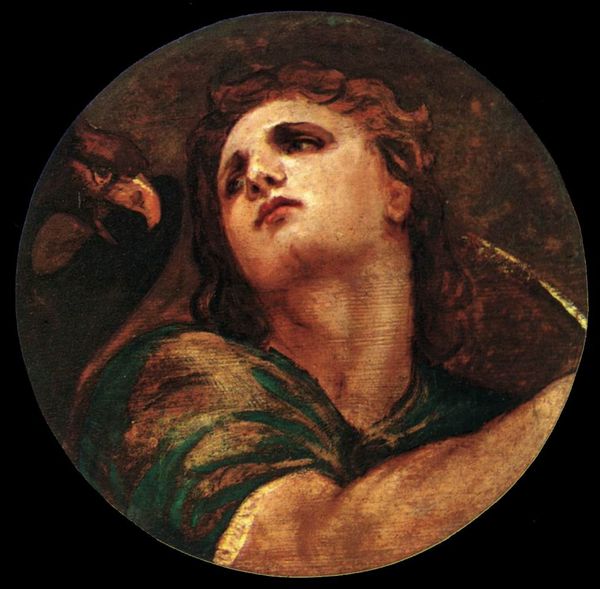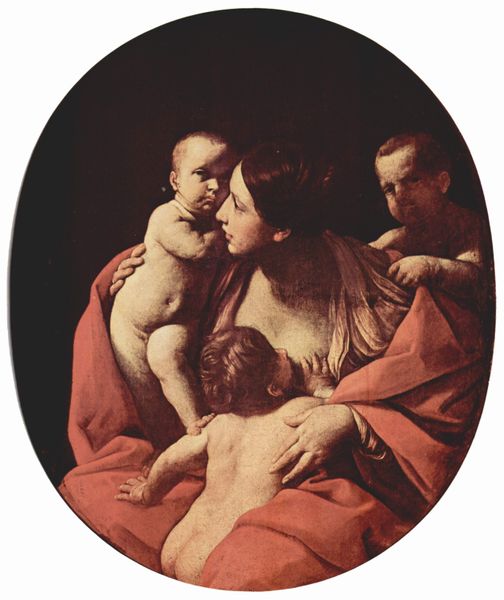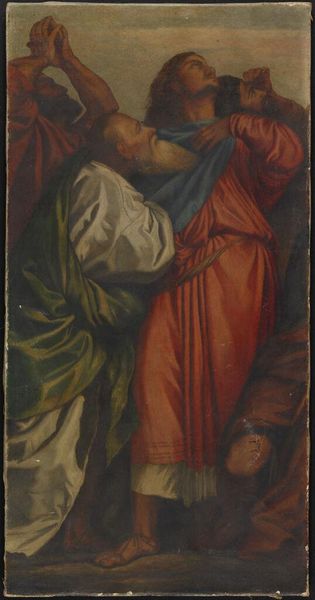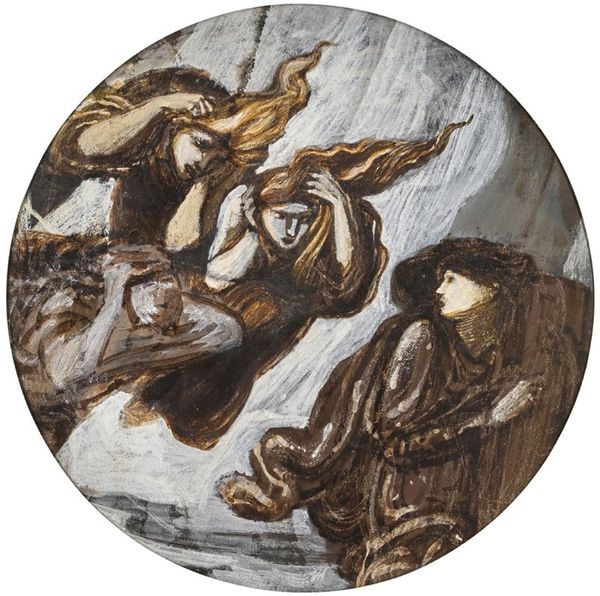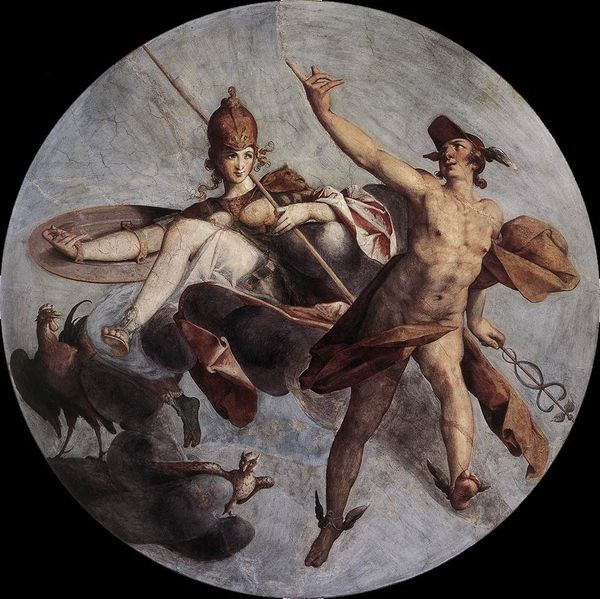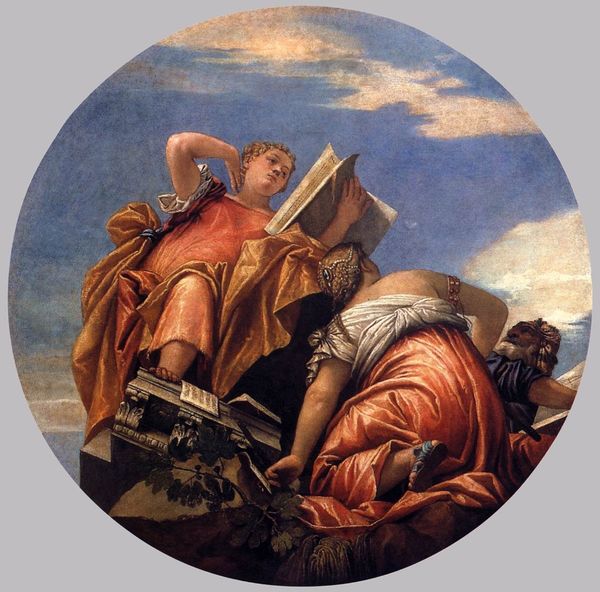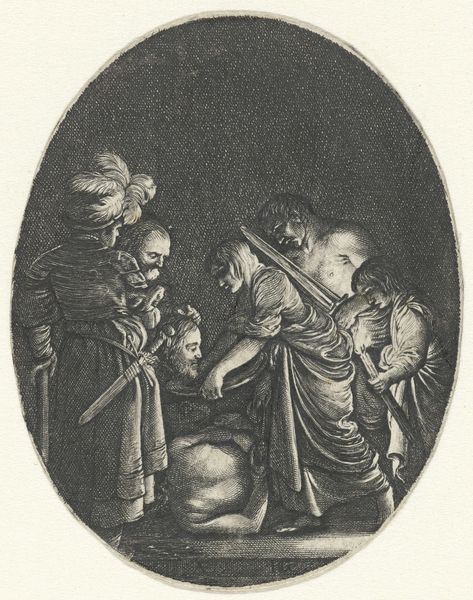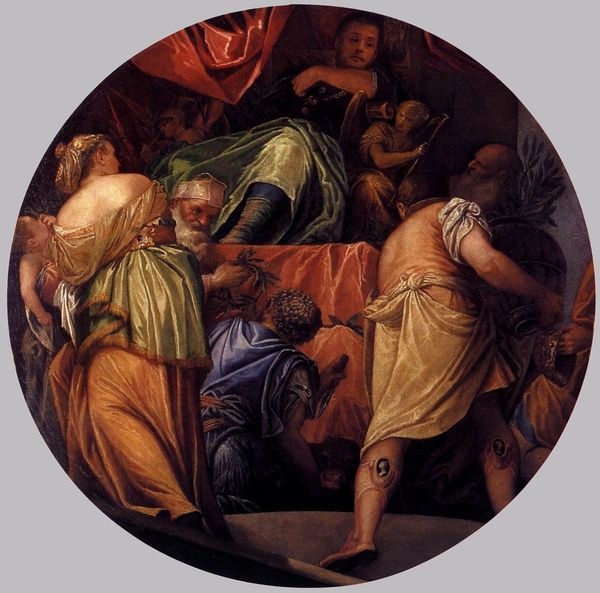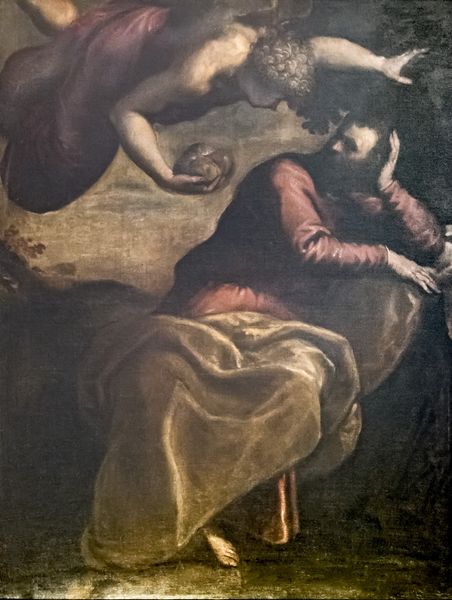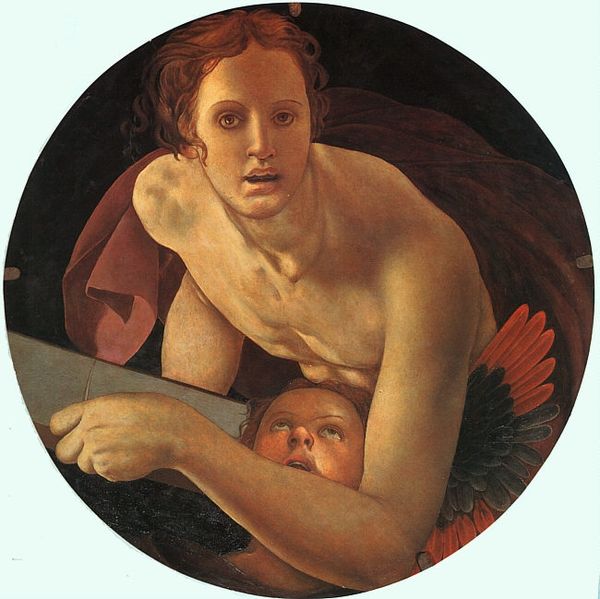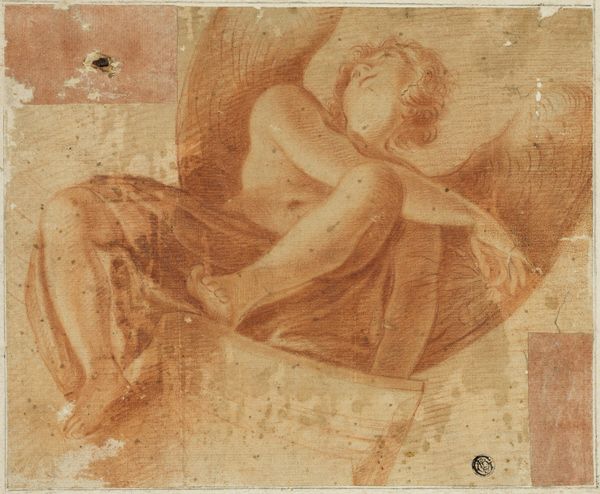
#
portrait reference
#
portrait head and shoulder
#
animal portrait
#
christianity
#
human
#
animal drawing portrait
#
portrait drawing
#
facial portrait
#
portrait art
#
fine art portrait
#
self portrait
#
christ
#
digital portrait
Copyright: Public domain
Titian created this painting of St. Luke, an oil on canvas, sometime in the 16th century. Here, the material qualities of oil paint significantly influence the artwork's appearance. Look at the thickness and texture of the paint application. Oil paint allows for layering, blending, and a richness of color that was relatively new at the time. Titian uses these qualities to create a sense of depth, volume, and even drama in the scene. This was a period of great experimentation and innovation in painting techniques in Venice, driven partly by the availability of new pigments and the growing demand for paintings on canvas as opposed to frescoes, a practice that was much more widespread in mainland Italy. The way Titian manipulates the oil paint, applying it in broad strokes and building up layers of glaze, also reflects the labor involved in the painting process. The value of the artwork then isn't only what it represents, but also the skill and effort invested in the making. That's a consideration we should keep in mind as we consider this and other artworks of the period.
Comments
No comments
Be the first to comment and join the conversation on the ultimate creative platform.
